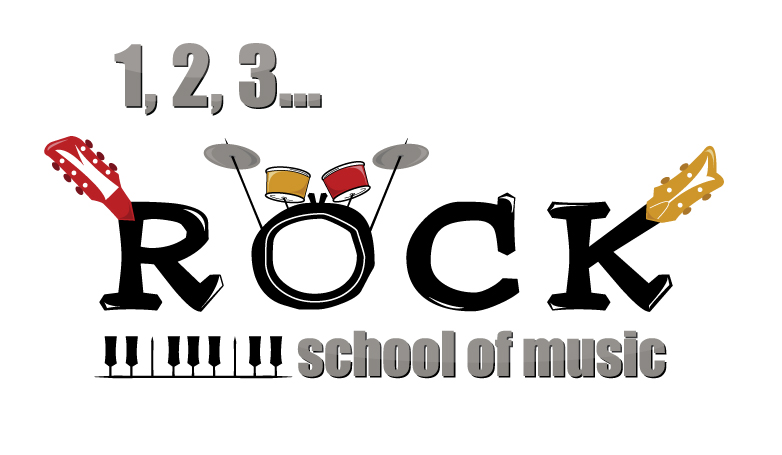This article examines intervention strategies music teachers can implement to combat bullying. Students enrolled in music ensembles may experience outsider status within the school community as a whole, thus contributing to heightened vulnerability and victimization.
—
October 2, 2017
In 2007, Texas Monthly magazine published an article chronicling the experiences of high school musicians competing for positions in Texas all-state ensembles. Many music educators were simultaneously delighted and a bit uncomfortable as they read the article. On the one hand, the exposure highlighted the benefits of music participation and served as a great advocacy tool. But on the contrary, the author dared to acknowledge the fact that high school musicians sometimes have to put up with labels like the geek, nerd, and queer as they pursue their artistic interests. While these terms can all be shrugged off and even be worn with pride, they also speak to the outsider status some students may experience among their peers.
This outsider status is also currently reflected in the hit American television series Glee, which highlights the fictional lives of talented high school musicians who endure low social status to be members of a top show choir. While girls in the club may be considered unpopular, the singers who receive the most grief are the guys who dare to step outside expected gender roles that relegate males to athletics and females to the arts. Not surprisingly, the show exploits this stereotype to its storyline advantage; nevertheless, art sometimes reflects real life, as has been documented in our literature. In a study of accomplished high school flutists, one young man revealed that taunts he received for playing “a girl’s instrument” changed his interactions with peers: The teasing had to do with homosexuality, and being a wuss, and you know, challenging your abilities as a man, you know? Looking back, it changed my life completely because of the people that I don’t talk to and the people I do talk to.
The teasing apparently came from the guys more than the girls, so my relationship with men is completely different than what it would have been if I hadn’t played the flute. I’m happy with my life the way it is. I’m glad that I talk to women more than men right now. But like I said, it changed everything about me. Music participation should not result in harassment. However, peer pressure to conform to gender expectations can be quite high. Research has demonstrated that students’ musical choices frequently reflect gender stereotypes and expectations, both in listening and in performance.
In a study of accomplished high school flutists, one young man revealed that taunts he received for playing “a girl’s instrument” changed his interactions with peers: The teasing had to do with homosexuality, and being a wuss, and you know, challenging your abilities as a man, you know? Looking back, it changed my life completely because of the people that I don’t talk to and the people I do talk to. The teasing naturally came from the guys more than the girls, so my relationship with men is completely different than what it would have been if I hadn’t played the flute. I’m happy with my life the way it is. I’m glad that I talk to women more than men right now. But like I said, it changed everything about me.2 Music participation should not result in harassment. However, peer pressure to conform to gender expectations can be quite high. Research has demonstrated that students’ musical choices frequently reflect gender stereotypes and expectations, both in listening and in performance.
While girls may react favorably to classical and pop music, acceptable male preferences often veer toward rock, heavy metal, or hip-hop. Similarly, studies examining gender associations and instrument choice in the United States have found that the flute and the clarinet are consistently ranked as some of the most feminine instruments among adults and children, while louder instruments, like the trumpet and trombone, are usually associated with males. While it may be more acceptable for girls to step outside the box and play instruments associated with men, boys who dare to play instruments associated with females are often harassed.
Be a Game Changer
Gender associations usually develop over time. In preschool and early elementary school, most children do not think about instruments in masculine-feminine terms. However, by third grade, gender associations are usually pretty well established.7 Boys who want to play an instrument outside expected norms may be particularly vulnerable to taunting, and that can be especially challenging during adolescence. As teachers, we can work to change these associations among our students; however, we also need to consider the possibility that parental attitudes might need to be modified as well. Research shows that parental support is one of the most important factors in a child’s musical success;8 therefore, we need to ensure that parents are not passing their gender stereotypes to their children.
Although most of the today’s parents and grandparents grew up in a time of social flux in which outdated gender stereotypes were questioned and revised, studies over the past thirty years have shown that instrument stereotypes persist. Many parents may need to be exposed to some alternate ideas about musical instruments. Realistically, attitudes and belief systems may take some time to change. For this reason, conversations and education need to begin as early as possible. If we wait until middle school and high school students’ parents show up at a booster club meeting, we are reaching only a fraction f the population.
We need to start educating parents when their children are younger, and music is a required subject for all children. Parents often show up in droves to see young children perform in elementary Parent–Teacher Association programs. Collaboration between elementary and secondary music teachers for these programs could provide excellent opportunities to reach out to parents. These efforts need not (and should not) be mammoth endeavors. Music teachers are often already stretched to the limit with demanding schedules, but a few simple initiatives might provide useful dividends in the future. Several suggestions to consider are listed below:
• Provide accessible, high-powered music to accompany easy movement pieces.
• Provide elementary teachers with posters of professional male and female musicians playing all the instruments.
• Engage high school instrumentalists who play gender-atypical instruments to play obbligato parts needed in elementary children’s choir pieces.
• Offer to host an interactive “instrument petting zoo” in which elementary children and their parents can play on some student-level instruments.
Establish a Safe Environment
No one should be harassed for playing the instrument he or she chooses. Nor should anyone be bullied for any other reason. As teachers, we have a responsibility to establish a safe, supportive learning environment for all students. While some adults may have previously dismissed bullying as a normal, innocuous part of childhood, recent media coverage has shown that consequences can be quite serious, and even fatal.
The death of Phoebe Prince in January 2010 was one of the most widely publicized examples of just how far things can go. Having moved to Massachusetts from Ireland, Phoebe was repeatedly abused at the hands of her classmates to the point that she chose to commit suicide. What is worse is that according to news reports, teachers and administrators in her school knew of the abuse and did nothing to stop it. Unfortunately, this scenario is not as uncommon as people may want to believe. Reports throughout the United States have documented a variety of situations in which children who were bullied finally took their own lives. A new term, “bullycide,” has even been coined to describe this tragic phenomenon. YouTube videos, such as “Bullycide in America” (http://www.youtube .com/watch?v=EMmGOJ2A9Fs), have highlighted victims’ stories to raise awareness.
Granted, many children who are bullied do not take such extreme measures, but for those who survive taunts, the negative effects on their self-esteem can carry into adulthood. Fortunately, national efforts to prevent bullying have increased.
On March 10, 2011, the White House sponsored the Conference on Bullying Prevention, and a government website was established to provide educators, students, and parents with resources to combat verbal and physical abuse.11 Part of the summit featured information based on research that can be located online.12 Some immediate highlights are summarized next. In a speech opening the conference, president Barak Obama shared that approximately one-third of all middle school and high school students have reported being bullied through verbal and physical assaults. These figures account for only those who admit to being bullied. Many victims may be hesitant to report their abuse out of embarrassment or fear that adult intervention will worsen the situation.
To add insult to injury, when victims leave school, bullying sometimes persists through online social networks, allowing the humiliation to continue around the clock. Research has shown that bullying is most prevalent in middle schools and tends to lessen in high school as adolescents gain increased impulse control. Although both males and females can be verbally and physically abusive, boys tend to be more physically aggressive, while girls are more likely to use words as their weapons. Causes of bullying may vary, but much of the harassment is based on the desire to establish power. Students’ quest for social status may be especially strong as they transition from one school setting to another (e.g., elementary school to middle school; middle school to high school).
Any child deemed “different” may be viewed as a potential target. Victims may be identified by ethnicity, disability, socioeconomic status, religion, or perceived sexual orientation. Recent research has demonstrated that adolescents perceived to be part of the LGBT (lesbian, gay, bisexual, transgender) community are especially at risk for bullying that can escalate into physical violence. Results from the 2009 National School Climate Survey showed that 80 percent of LGBT students had been verbally harassed, 40 percent had been physically assaulted, and 60 percent felt unsafe in their school environments.
Be Consistent and Supportive
Changing bullies’ attitudes can be difficult. Some may come to school from dysfunctional, abusive situations where learned patterns of behavior have been ingrained. To establish a safe school environment, prevention measures aimed to empower bystanders can be highly effective. Much bullying occurs when teachers are not present; therefore, students need to be taught that reporting bullying behaviors is not tattling. Likewise, students should be taught to support the victim rather than the bully. Some bullies may need years of intervention to change their perspectives, but in the meantime, we can help establish positive, healthy environments that empower the rest of our students.
Research examining effective intervention strategies has determined that a variety of preestablished antibullying programs may be useful as long as they are consistently implemented. Not surprisingly, one-shot assemblies aimed at bullying prevention are ineffective. The most successful programs are ones that involve students, teachers, support staff, parents, and community members in an ongoing process. Useful tips for schoolwide efforts can be found at http://www .stopbullying.gov/educators/confirm_ bullying/index.html. Among the many suggestions provided, some highlights include volunteering to serve on an antibullying school committee, providing increased supervision in public bullying “hot spots” on campus, establishing an overall climate of tolerance and respect through our actions, and engaging with parents and community members to work cooperatively to stop bullying. These recommendations all suggest that we make a concerted effort to establish relationships in the school and the community.
As music educators, we need to ask ourselves some pertinent questions about how well we accomplish this goal. How frequently do we leave our classrooms to engage with other teachers? Do we make an effort to have a campus presence with all students, or do we focus only on the individuals who come to us? Do we attempt to get to know the parents of students who are not in our classes, or do we show interest only in parents willing to help meet our needs? How accessible do we make ourselves and our work to the community around us? Many people may not relate to our musical interests and may feel they have little in common with us, thus perpetuating the idea of musicians as “outsiders.” What are we doing to reach out to meet their musical interests? The effort required to build relationships can pay off in ways that not only strengthen community engagement but may also advance our programs.
Take Action in Your Community
Here are some approaches for you to consider: • Get outside your classroom. Communicate with other teachers, coaches, and paraprofessionals to see how you can each support each other. Active communication between adults can set a positive example for our students. • Use campus duty assignments as a means of developing
• Get outside your classroom. Communicate with other teachers, coaches, and paraprofessionals to see how you can each support each other. Positive communication between adults can set a positive example for our students.
• Use campus duty assignments as a means of developing a positive rapport with students, parents, and colleagues. While these tasks are often considered an inconvenience, they can also provide opportunities to establish connections with a large number of people.
• Attend nonmusical events to support students outside your classroom setting. Make an effort to congratulate students on their victories or provide a supportive ear when they experience defeat.
• Consider alternative music offerings that may meet the needs of students who are not interested in a traditional band, choirs, or orchestras. Traditional offerings might include guitar classes, mariachi ensembles, garage bands, MIDI computer music, and so on. Collaborate with other music professionals in the community who can assist if you do not have time and skills in these areas.
• Establish a musical presence outside your classroom. Have small groups perform music in a variety of styles as students enter school, eat lunch, or leave for the day. Music does not have to be relegated to concerts, competitions, and pep rallies. Work to make music a daily part of life that becomes an important part of school pride. Provide actual reasons for all students to value what you and your students do.
• Consider starting a beginning band/ choir/orchestra for parents. Many community ensembles are designed for adults with previous experience who feel comfortable with audition processes, but how often do we give adults the opportunity to start as a beginner? Adults who never had the chance to participate in music during their youth may welcome the chance to explore untapped talents.
These ideas represent just a few concepts that may be applied to reach out to members of the community beyond our own classrooms. Working as a community allows us all to foster a safe, supportive environment for students throughout our schools. While bullying may never completely disappear, personal connections we develop can aid in our efforts to intervene effectively when necessary. Our example of cooperation and collaboration can set the tone in our classrooms, the campus environment, and the community at large. With a little planning and effort, we can help establish an environment of mutual respect that supports all students in their endeavors.
—-
This article is a re-post, with small modifications, of “Bullying: What Can Music Teachers Do?” an article published on meraises.com by Donald M. Taylor.
Click here to visit the original content.


